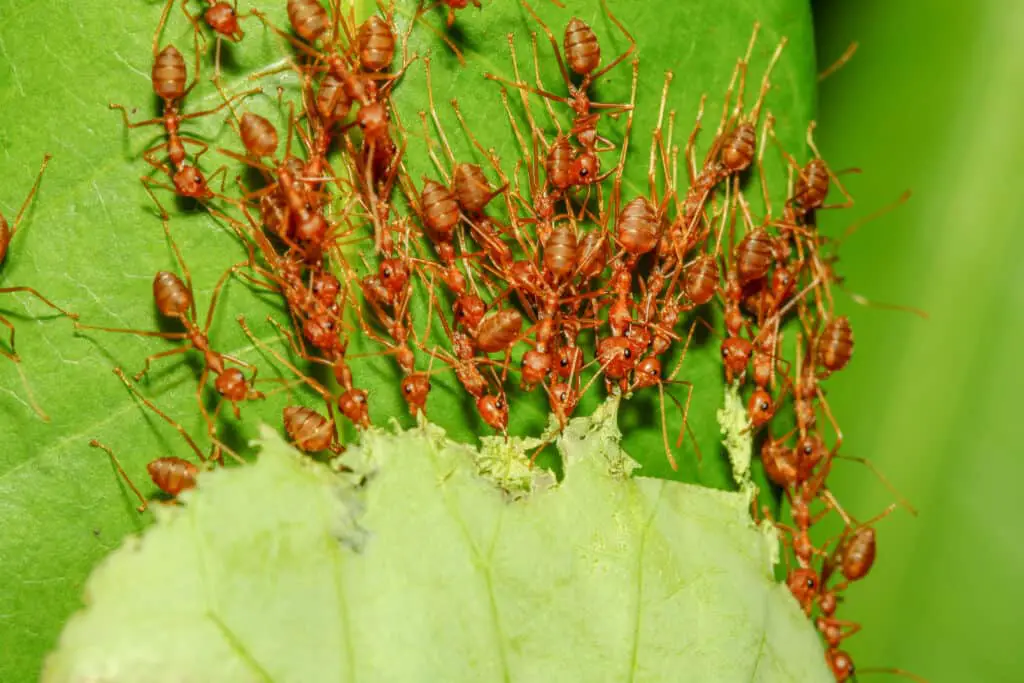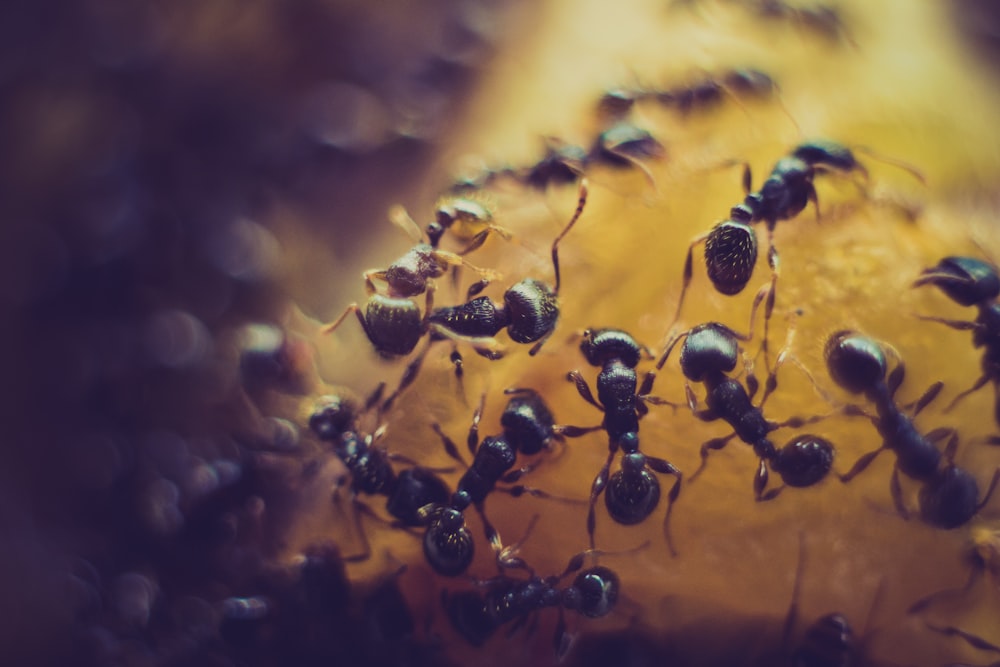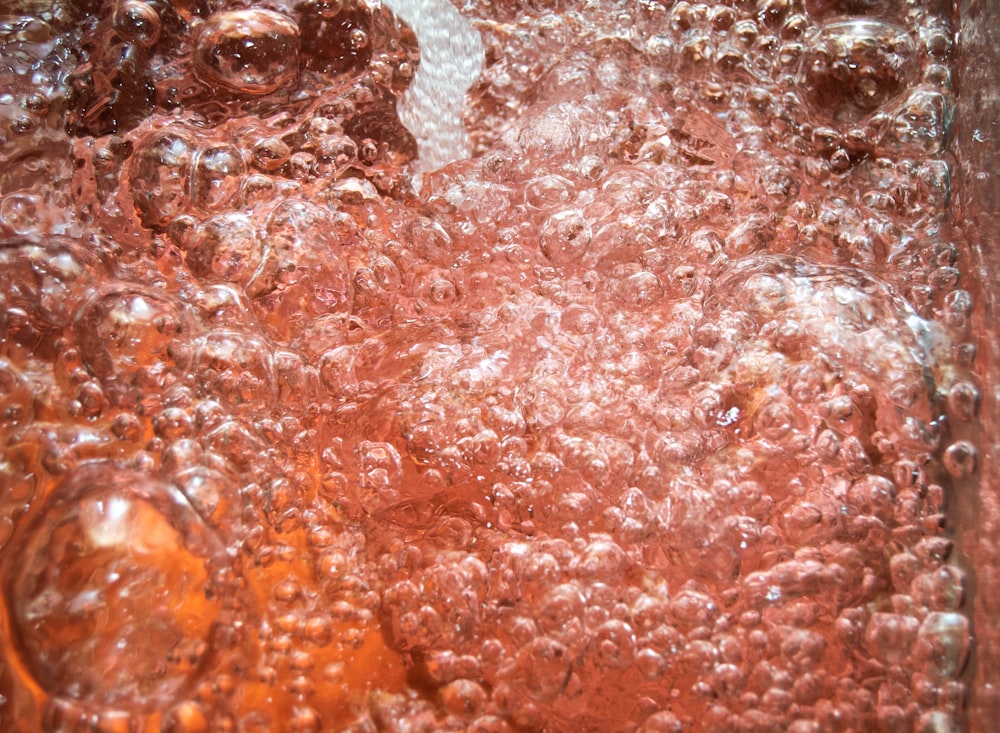Ants seem like they’re always running around. Have you ever wondered why ants seem to be everywhere in some parts of the year, while in others you can’t find them? Are ants not active in some parts of the year? When are they most active?
In general, ants are most active during the night of hot summer days. This is because ants are primarily nocturnal. Since they’re cold-blooded, ants will hibernate or avoid going outside if the temperature is too cool. Increased temperature also accelerates breeding rates for many ant species.
Are Ants More Active At Night?
Research carried out by a few professors in south Florida on fire ants in a lab setting on ants sleeping habits shows that ants take brief naps throughout the day, and there is no specific time of the day when they sleep.
The research also showed that whether there was a light on the ant colony or not did affect the ant sleeping habits.
Nonetheless, this too depends on the specie of the ants.
As some ant species show signs of being more active during the nighttime, these can be classified as nocturnal ants,
One of the worst pests, carpenter ants, can be classified like this.
These nocturnal ants will sleep more during the day while being more active at nighttime.
Are All Ant Species More Active At Night?
Ants are present year-round; however, some ants are more active at night, while some are more active during the day. While most ants are nocturnal and will be much more active at night, this does not apply to the whole species as a blanket statement.
Ants “know” that the nighttime is the safest time of the day with the least human movement.
This is also the easiest time to avoid other predators, like ant eaters!
Nocturnal ants like the carpenter ants and sugar ants have sleeping habits that can be characterized as doing most of their resting during the day.
These are night ants that forage at nighttime.
Diurnal ants are day ants.
These days ants mostly forage and look for food in the daytime.
Argentine ants work hard during the day to find food resources for their colonies.
These ants have smaller bodies compared to nocturnal ants.
Other ants species are active both during the daytime and nighttime, and these are called cathemeral ants.
The Polyrhachis Sokolova is one such ant species whose activities throughout the day showed that it is active both the night and the day.
Cathemeral ants (and cathemeral insects in general) will be more active during the day in the colder months as the temperature is higher and more active at night in the summer months.
How Do Weather Conditions Influence Ant Activity?
Weather conditions and temperature play a critical role in the activeness of worker ants. Most ants are more active during the summertime as most ants hibernate during the winter. But some species like the carpenter ants are also very active during winter.
Many ants hibernate in the winter months deep within their nests.
This is like other animals, as the temperature outside their colony/home is too cold for them to survive.
During the colder months before winter, the reproductive winged queens stop laying eggs.
The worker ants will keep collecting food until they can no longer remain active.
They will use these stored resources to survive the winter period ahead.
The colony will deepen their tunnels within the nest, as the temperature underground is much more stable and can keep the colony warm during the winter.
Worker ants become active much faster than the queen ant and will start preparing the nest for the queen before she awakens.
Ants know how vital these upcoming months are once the queen ant is awake and often only stops long enough to share food with other colony members.
Some ants, like the carpenter ants, require damp wood for survival.
This leads to some awkward situations, as carpenter ants sometimes make their nests indoors… often in a house.
Wood is an incredible insulator and can keep out the cold winters.
This is why these carpenter ants remain active even in winter when the temperature outside is cold.
When Do Ants Sleep?
Ants do sleep but for very short periods. While it may seem like ants are constantly on the move, they are taking periodic naps throughout the day to keep their energy levels high and their colony full of resources.
A strong team of professors confirmed this behavior through a research study on ants and their sleeping behavior.
The study deduced that although ants sleep, their sleeping patterns differ entirely from humans.
They take small naps throughout the day rather than one “long sleep” at a specific time.
This is why many different ants throughout the colony take turns sleeping, making it feel like they are working around the clock.
Are Ants More Active When It Is Hot?
Ants are more active during spring and the warmer months. Like other insects, they also hibernate during winter and burrow deep inside their nests. To keep safe from the lower temperature, worker ants make their nests deep inside the earth. Hotter temperatures increase breeding rates in most ants.
These nests prove helpful in the cold when ants stay inside their nests and the whole colony hibernates.
Meanwhile, carpenter ants can be active in the colder months because their nests are indoors, where the colony is closer to heat and can function correctly.
Do Ants Prefer Night or Day?
Different species of ants prefer other times of the day. Whether ants prefer night or day can be gauged by their activity level at a particular time. Wherein there are three kinds of ants nocturnal, diurnal and cathemeral.
It can be simplified that nocturnal ants prefer nighttime, for instance, carpenter ants.

As they mainly remain in their nest during the daytime.
Diurnal ants, on the other hand, prefer daytime as the workers are more active during the day and spend the nights safe inside their colony.
Meanwhile, Cathemeral ants prefer both night and day.
The worker ants of these species are active throughout the day and only rest in small naps, taking turns with their worker friends in their nest.
Why Do Ants Suddenly Appear
Ants are always active, but they can appear out of nowhere in spring or summer if there is food lying around. The time of the day and the ant species will decide how fast ants appear.
In spring, as the workers are coming out of hibernation, it can appear as if they are suddenly appearing.
At this time, as the food resources have been depleted during the hibernation period, workers are more frantic to find food.
This is why you’ll find them sabotaging your picnics!
The primary source of attraction, though, is if you have unprotected food lying around the house, which will attract ants instantaneously, especially if it is something sweet.
When is Ant Season
Spring is the ant season as the young queen leaves her parent nest to mate and start a new colony. The nuptial flight season is when a queen will mate, and a new nest will grow. It is also when hibernating ants come out of hibernation for the year.
Signs of Carpenter Ant Colony
A common sign of a Carpenter ant colony is leftover damaged wood. The main difference between carpenter ants and termites is that carpenter ants will chew and spit out the wood, leaving behind a sawdust-like material, while termites will eat it.
The most critical step to permanently removing a carpenter ant infestation is locating the carpenter ant colony.
Remember, these are nocturnal ants and will be much more active at night.
Once found, you can mix ant bait with something sweet like honey for the carpenter ant to carry back to its satellite nest.
Unlike boiling water, this bait ensures that the queen ant dies rather than fleeing the parent nest and relocating.
Cold water may not even eliminate ants; ants can survive underwater for long periods.
What Are The Main Activities Of Worker Ants And The Queen?
Worker ants perform multiple tasks like foraging for food and water, protecting the nest, etc. Each member of the colony has some specific role in fulfilling. Ants have a social hierarchy, with queens at the top and worker ants at the bottom of the ladder, right above male ants.
Ants undergo a complete metamorphosis, and the queen lays eggs that mature into larvae and eventually a worker ants.
In contrast to the queen’s activities, worker ants’ main activities are collecting food and protecting the larvae and the nest.
Frequently Asked Questions
Let’s look at the most asked questions regarding several species of ants and their activeness.
The activeness of an ant is determined by its specie as that will decide which time of the day it is the most active.
When Are Fire Ants Most Active?
The fire ant is most active during the daytime. These ants prefer dry weather and flourish when the temperature is not too hot or cold. Fall is usually the best time to find and eliminate these insects.
When Are Black Ants Most Active?
Black ants are also known as white-footed house ants. These ants are nocturnal and hence the most active at night. Their nest is commonly found in forests with high moisture. Worker ants form chemical trails between their nest and the far-away food source as a guide for other ants.
When Are Carpenter Ants Most Active?
Carpenter ants are nocturnal, meaning they are the most active at night. A carpenter ant colony can be formed indoors. Hence, they can be active during winter. Carpenter ants travel long distances to find food as they do not eat wood; they turn it into sawdust.
Final Thoughts On Ant Activity
The activeness of ants depends on many factors, all briefly discussed in this article.
There are thousands of ant species, each with distinct biological features, characteristics, and abilities resulting in no two species being the same.
However, the information that we do have shows that ants are hard-working creatures that work non-stop, whether it be daytime or nighttime, summer or winter; some specie of ants is permanently active.








